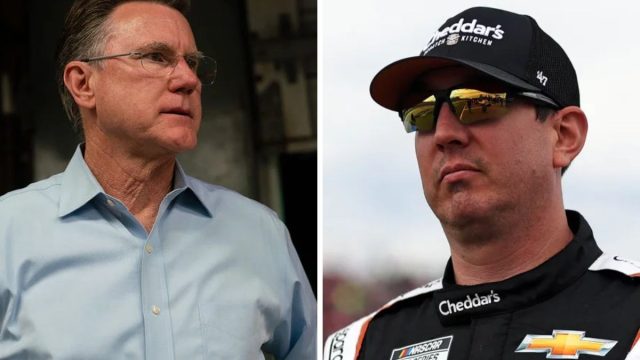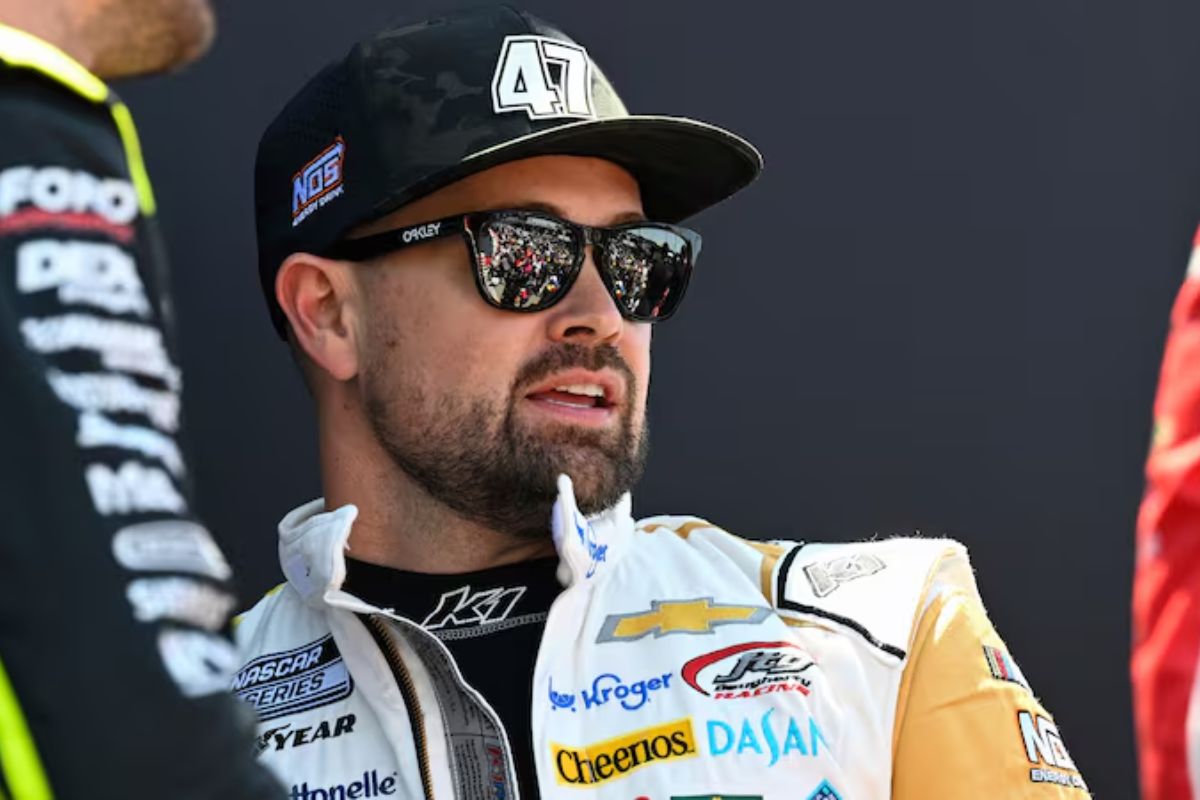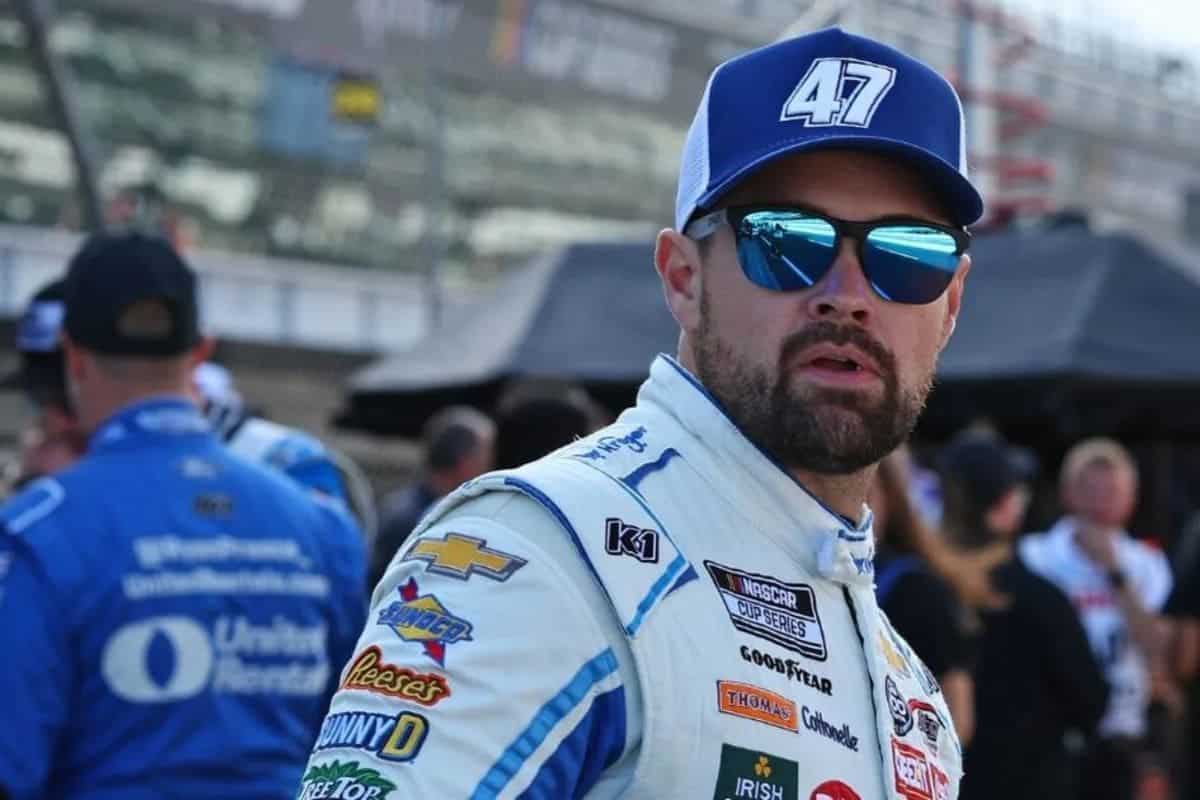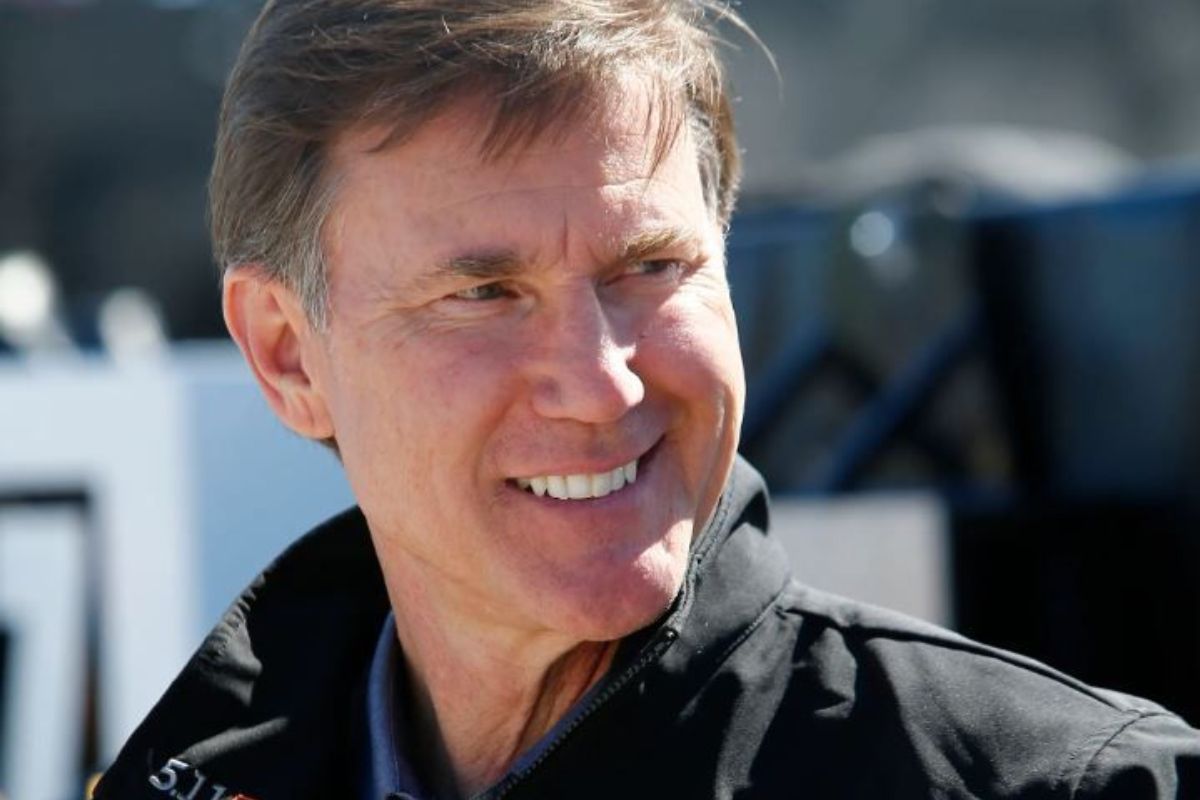Elton Sawyer Admits Bending Rules for Kyle Busch: The recent acknowledgment by Elton Sawyer, Senior Vice President of competition of NASCAR, that rules were potentially bent for Kyle Busch has ignited discussions about bias and fairness in NASCAR’s regulatory framework. Sawyer’s statement came in the wake of Kyle Busch‘s controversial on-track altercation with Ricky Stenhouse Jr., where Busch openly admitted to intentional retaliation. While Stenhouse Jr. faced substantial penalties, Busch seemingly escaped, raising questions about inconsistent rule enforcement. This disclosure opens a broader discourse on how NASCAR’s decisions impact the sport’s integrity and whether favoritism plays a role in officiating practices.
Key Highlights
- Elton Sawyer provided a detailed rationale for NASCAR’s decisions regarding Kyle Busch and Ricky Stenhouse Jr.
- Busch admitted to intentionally wrecking Stenhouse Jr., but NASCAR chose not to fine him.
- Sawyer emphasized NASCAR’s aim for fairness and safety in their enforcement decisions.
- Fans accused NASCAR of favoritism following the decision not to penalize Busch.
- Calls emerged for more transparent and equitable jurisdiction processes within NASCAR.
Ricky Stenhouse Jr. Faces Heavy Penalties
Following a heated altercation with Kyle Busch, Ricky Stenhouse Jr has been subjected to significant penalties from NASCAR, including a $75,000 fine and the indefinite suspension of his father. This decisive action highlights NASCAR’s commitment to maintaining discipline and sportsmanship within the racing community.
The altercation, which escalated into a physical brawl, prompted NASCAR to enforce stringent measures to deter such behavior in the future.
Stenhouse Jr’s penalties reflect not only his role in inciting the conflict but also the broader implications of allowing unsportsmanlike conduct to go unchecked. The involvement of his father in the fight, leading to his indefinite suspension, emphasizes NASCAR’s firm stance against family members intervening in on-track disputes. This policy aims to prevent external influences from exacerbating tensions and ensures that accountability remains squarely on the professional athletes.
Moreover, the repercussions extended to Stenhouse Jr’s JTG Daugherty Racing team, with mechanic Clint Myrick receiving an 8-race suspension and tuner Keith Matthews being sidelined for four weeks. These penalties indicate that NASCAR holds teams collectively responsible for the fight, emphasizing the importance of a unified approach to sportsmanship.
Kyle Busch Avoids Penalty
Amid growing controversy, Kyle Busch has surprisingly escaped any penalties for his retaliatory actions against Ricky Stenhouse Jr during the race’s initial lap. This decision has incited a wave of debate among fans and experts, prompting questions about NASCAR’s consistency in enforcing rules and the potential favoritism towards high-profile drivers.
Elton Sawyer, Senior Vice President of competition of NASCAR, has come forward to explain the rationale behind this critical decision. According to Sawyer, the officials determined that Busch’s actions, while aggressive, did not breach the boundaries warranting a penalty. This interpretation has sparked considerable debate, with many arguing that a similar incident involving a less prominent driver might have resulted in a different outcome.
The decision to forgo penalizing Busch has also fueled discussions about potential biases within the sport’s officiating. Critics argue that consistency is paramount to maintaining the sport’s integrity and that the current approach could reduce fairness. Supporters, however, point to the complexities involved in officiating high-stakes racing and the necessity for discretion in judgment calls.
Details of the On-Track Incident
The on-track incident began on the race’s initial lap when Ricky Stenhouse Jr. attempted an aggressive three-wide tactic, causing Kyle Busch’s car to scrape the outside wall. This move set off a chain of events that would dramatically alter the race dynamics.
Kyle Busch, known for his competitive spirit, did not take kindly to the early contact. His reaction was swift and calculated. On Lap 2, Busch retaliated by deliberately nudging Stenhouse Jr.’s back bumper in Turn 3, leading to a significant crash. The collision caused Stenhouse Jr. to lose control and slam into the wall, effectively ending his race.
The immediate aftermath of this incident was a flurry of activity on the track and in the pits, as teams scrambled to assess the damage and adjust their strategies.
The incident exemplifies high-stakes competitive racing, where split-second decisions and reactions can have far-reaching consequences. Busch’s retaliatory action, while understandable from a competitive standpoint, highlighted the fine line between aggressive driving and unsportsmanlike conduct.
The following physical confrontation added complexity to the incident, intensifying the scrutiny from NASCAR officials and fans.
Kyle Busch’s Admission and NASCAR’s Decision
Kyle Busch’s admission of intentionally wrecking Ricky Stenhouse Jr. has ignited a heated debate, particularly after NASCAR decided not to impose fines despite his own acknowledgment of the incident. Busch’s open confession came during a discussion with Charlie Marlow on Kenny Wallace’s show, where he openly stated, ‘I wasn’t too pleased about that and uh did come back and retaliated, showed my displeasure of that.’ This stark admission followed a backstage confrontation where Busch reiterated his actions.
Despite these admissions, NASCAR’s decision to forgo penalties has raised eyebrows among fans and critics alike. Notably, Busch’s interview with Marlow surfaced only after the penalties were announced, potentially explaining his initial reluctance to discuss the incident with the media. The timing of this disclosure has led some to speculate that NASCAR’s decision-making process may have been compromised by incomplete information.
In the wake of the controversy, NASCAR faced significant scrutiny from its fanbase, who accused the organization of favoritism. The perception of biased decision-making was further fueled by NASCAR Vice President of Competition, Elton Sawyer, who subsequently addressed the issue on a Wednesday morning segment on SiriusXM NASCAR Radio.
“If we see something, we have… proven over time that if intentionally hooking someone in the right rear and we have reacted to that. But we rarely as a sanctioning body, and we do stay out of the… the on-track incidents unless we see something that you know, blatantly comes back to us that, you know, we need to react to. In this case, we reviewed it, we looked at it, we looked at listen to audio, and again a hard racing but… also uh, truly you know appreciate where the two drivers stand on it you know go let those guys decide, and agree to disagree.” – (Sawyer)
The core of the debate centers around NASCAR’s consistency in enforcing its rules. While some argue that the absence of a fine indicates leniency towards a high-profile driver, others believe it emphasizes a need for more transparent and equitable adjudication processes.
Elton Sawyer’s Explanation
Elton Sawyer’s explanation on SiriusXM NASCAR Radio provided a detailed rationale for NASCAR’s decision-making process regarding the penalties imposed on Kyle Busch and Ricky Stenhouse Jr. Sawyer emphasized NASCAR’s commitment to maintaining fairness and safety on and off the track, elucidating the intricacies that guided their actions.
“I think it’s fair to say that when you have crew members and family members that put their hands on our drivers, we’re going to react. There’s not a lot of detail I’m going to get into due to the fact that these are appealable penalties, and I want to make sure that we’re fair to that process. With that being said, and we’ve been consistent about this when crew members and family members get involved, we are going to react. That’s exactly what we did.” – (Sawyer)
🗣️ "It's the All-Star Race. It's hard racing."#NASCAR's Elton Sawyer explained why no penalties were handed down to @KyleBusch for his Lap 2 incident at @NWBSpeedway with @StenhouseJr.
More → https://t.co/MKhd9eLXG8 pic.twitter.com/37nhwbiQ9A
— SiriusXM NASCAR Radio (Ch. 90) (@SiriusXMNASCAR) May 22, 2024
Sawyer highlighted NASCAR’s general approach to on-track incidents, noting that while they typically refrain from intervening unless an action is blatantly dangerous, they did review the altercation between Busch and Stenhouse thoroughly. He stated, ‘If we see something, we have proven over time that if intentionally hooking someone in the right rear and we have reacted to that. But we rarely as a sanctioning body… react to the on-track incidents unless we see something that you know, blatantly comes back to us.’
“When you wait 198 laps and you make those decisions that were made, again, we’re going to react to that. […] Granted there was no tunnel, granted there was no crossover bridge (to allow Stenhouse Jr. to leave the track), better decisions could have been made throughout that period of time between the incident on the race track and the incident in the garage post-race.” – (Sawyer)
In the case of Stenhouse, Sawyer discussed the gravity of the situation, especially given the involvement of crew and family members. He further explained the rationale behind the severe penalties, pointing out that premeditated actions are treated with utmost seriousness.
- Consistency in Penalties: NASCAR has a history of reacting to intentional and dangerous on-track actions. Sawyer stressed that Busch’s incident fell within their usual parameters of review.
- Involvement of Non-Drivers: Sawyer underlined that the involvement of crew members and family in confrontations is a significant factor that warrants stringent penalties.
- Premeditation: Sawyer emphasized that the premeditated nature of Stenhouse’s actions, including waiting for Busch and initiating physical altercation, necessitated a strong response.
News in Brief: Elton Sawyer Admits Bending Rules for Kyle Busch
The decision not to penalize Kyle Busch despite his admission of intentional wrecking has heightened scrutiny on NASCAR’s officiating practices.
Elton Sawyer’s acknowledgment of potentially bending the rules emphasizes the necessity for transparent and consistent enforcement to uphold the integrity of the sport.
Controversies like this emphasize the urgency for NASCAR to address biases and guarantee fairness in its regulatory actions, thereby preserving the competitive spirit and trust of its stakeholders.
Our Reader’s Queries
Q. What is Kyle Busch’s rule?
A. The “Kyle Busch Rule,” highlights a unique aspect of NASCAR where a Cup Series driver competes in the Xfinity Series or the Truck Series within the same season. This term specifically identifies drivers who race in both the premier and lower-tier series simultaneously. Among the most prominent are Brad Keselowski and Kyle Busch, known for their frequent participation across multiple NASCAR series. This practice has sparked admiration and debate within the racing community, reflecting the dynamic and competitive spirit of the sport.
Q. Who did Kyle Busch sue?
A. Kyle Busch Motorsports has filed a lawsuit claiming that Concord-based Rev Racing owes them $325,000. Rev Racing, known as the competition arm of NASCAR’s diversity program, is at the center of this legal dispute.
ALSO READ: Elton Sawyer Praises NASCAR’s Evolution After Racing Career



